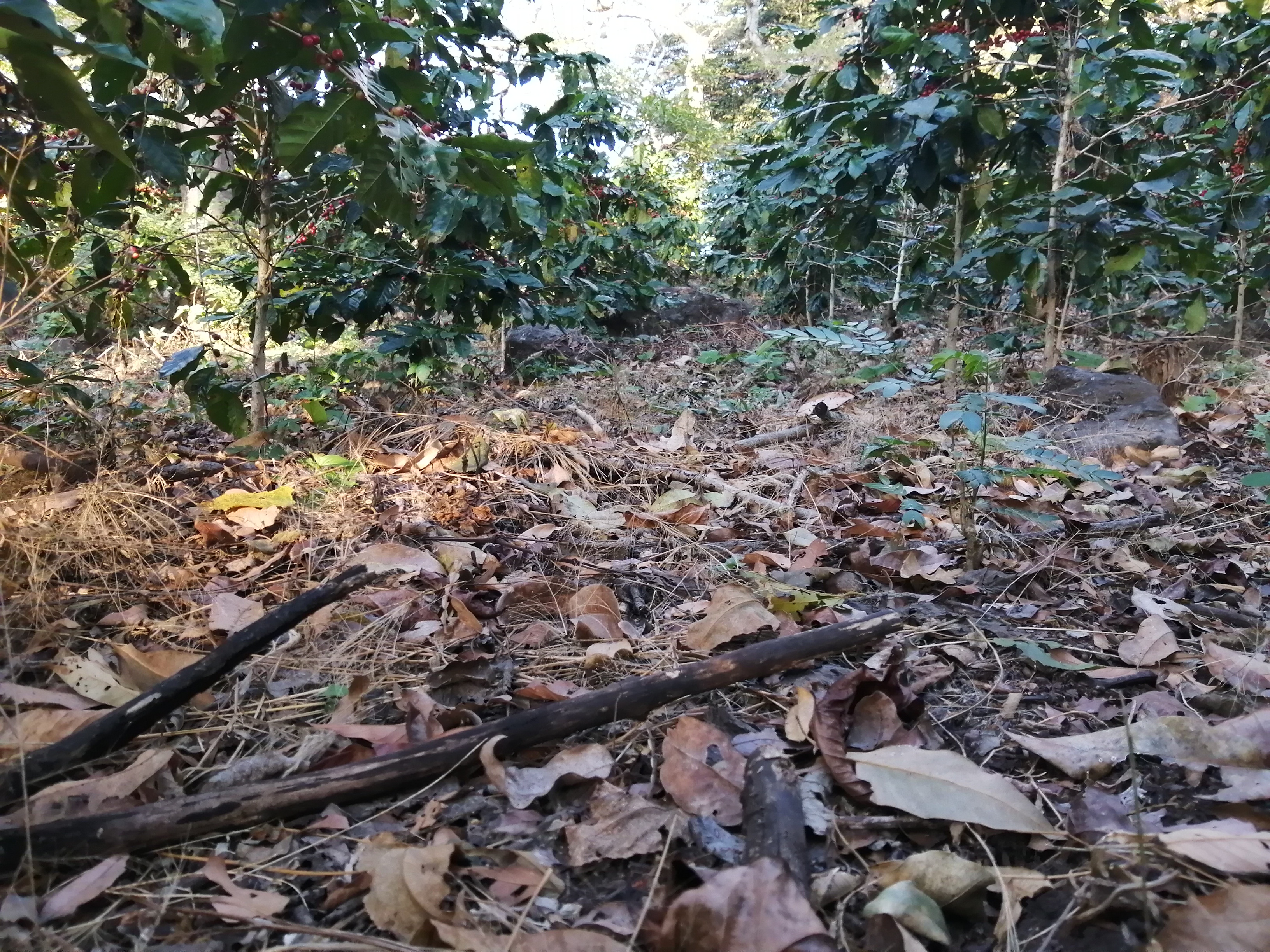Coffee Tree Fertilization Requirements

This post is also available in:
This post is also available in:
![]() Français (French)
Français (French) ![]() العربية (Arabic)
العربية (Arabic) ![]() Português (Portuguese (Brazil))
Português (Portuguese (Brazil))
Until now, we have gone through some of the different necessary requirements when cultivating coffee. Before moving on to establishing your plantation, let us review some key details:
- Make sure the temperatures of your land ideally oscillate between 17° to 26° C (62-79 °F).
- Check the location’s altitude; ideally, it must be between 900 to 1600 MASL.
- The ideal precipitations must be between 1,000 to 3,000 millimeters per year.
- Humidity ranges must be between 65% to 85%.
- Wind speed in the area should be below 30 km per hour (18.6 miles per hour).
In addition to the details mentioned above[1], you must consider some basic requirements that your land’s soil must have before planting:
- The soil must not be sandy as this type of ground will drain too fast any water that comes during summer or any hot and dry season. This will increase the substrate’s temperature.
- The pH levels between 5.5 and 6.5 will make it easier for nutrients to be absorbed.
- Your land must have at least a 3% availability of organic materials.
It is always recommended that you timely take samples of your soil to get to create from the start a nutritional plan for your plantation. Knowing this will help you determine what products or materials you will need to add later by soil or foliar fertilization.
Coffea is a higher plant, which is a way to commonly refers to plants with vascular tissues that can transport water, mineral salts, and nutrients throughout their whole body. As they are thought to be more evolved, they tend to require at least sixteen elements to complete their growth. These elements can be classified into two:
- Non-mineral elements which come from water and the atmosphere: Carbon (C), Hydrogen (H), and Oxygen (O).
- Mineral elements are found in the soil and are absorbed mainly through the roots; however, the stomata or pores of the leaves are also able to absorb them. Coffee trees need:
- Primary macronutrients, nitrogen (N), phosphorus (P), and potassium (K), are essential for proper plant growth and development. Nitrogen, a key component of chlorophyll, is critical for tissue formation and overall growth. Phosphorus is essential for cellular respiration, growth, and multiplication and plays a crucial role in the flowering process and the development of coffee berries. Potassium, on the other hand, enhances the quality of the berries by facilitating the production and transportation of sugars and helps the plant to tolerate dry seasons and low temperatures.”
- The secondary macronutrients, calcium (Ca), magnesium (Mg), and sulfur (S), are needed in smaller quantities but are still essential for plant growth. Calcium improves photosynthesis and facilitates the transport of sugars to the berries, enhances the absorption of potassium and nitrogen, and enhances the germination capability of the seed. Additionally, it is essential to growing apical buds, roots, and coffee berries. Magnesium, found in chlorophyll, is vital for photosynthesis and promotes the development of microorganisms essential for rich and fertile soil. On the other hand, sulfur plays a vital role in the plant’s production of proteins and enzymes.
- Micronutrients such as boron (Bo), zinc (Zn), copper (Cu), iron (Fe), manganese (Mn), chlorine (Cl), and molybdenum (Mo) are needed in very small amounts. However, they are still crucial for the plant’s overall health and productivity. Boron is involved in physiological tasks such as metabolizing nitrogen, maintaining safe levels of chlorogenic acids, and facilitating the movement of sugars through cellular membranes. It promotes the healthy growth of tissue, including wood in the stem and buds throughout the plant. Zinc plays a key role in the growth of coffee berries and is responsible for synthesizing growth hormones in the plant. Copper is essential for chlorophyll formation and acts as a metal component of enzymes involved in the decomposition process. Iron is a significant component of many enzymes and helps maintain healthy chlorophyll. Manganese is vital for respiration and photosynthesis and plays a role in transporting iron in the plant. Chlorine directly impacts the quality of the berries, their growth along with the leaves, and the turgor of the plant. On the other hand, molybdenum is involved in metabolizing phosphorus, absorbing and transporting iron, and helping the plant assimilate nitrogen.
As you can see from the above list of nutrients, coffee plants require a complete “diet.” A deficiency in any of them will significantly reduce your production or decrease its quality when processing. However, note that the required amount of this nutrient will vary according to the plant’s development stage.
Among the various forms of fertilization, two methods are commonly employed: ground application of either physical or chemical preparations and the direct application of liquid fertilizers to the leaves. The former involves the direct application of a combination of essential nutrients to the soil. At the same time, the latter entails the targeted application of a nutrient-rich solution to the foliage of the plants. These two types of fertilizers are a must at different times of the year.
Coffee Seedlings Fertilization
You should start adding fertilizer to the seedlings ten days after they have been transferred from the germinator to the bag. This is approximately when the first leaves start to develop. At this point, lower nitrogen rates are required, but the rates of phosphorus should be higher to stimulate root growth.
There is a long-standing debate about the use of chemical mix over physical mix fertilizers, but most experienced growers recommend the usage of chemical mixes during the seedling stage. This is because the mix is more precise with the right amounts and concentrations. This means that coffee seedlings can receive the required nutrients faster, therefore making them have a quick response to their effects.
Dose:
For ground application Use the 18-46-0, 18% nitrogen (N), 46% phosphorus (P), and 0% potassium (K) formula. At this point, the plant needs a lot of energy to develop the root system and its leaves. If you guarantee vigorous growth right from the start your seedlings will have a successful crop down the line. Add between 2 to 5 grams (0.07-0.17 oz) per bag or seedling container.
The seedlings have the advantage of being cared for in coffee nurseries, so at this point, where you have controlled access to water, you can opt for using the ground application through irrigation, a method commonly known as Fertigation. Here it is recommended that you use a ratio of 2 cc of fertilizer for every 1 L of water.
The foliar application should start when the seedling has fully formed between 2 to 4 pairs of leaves.
This should be done using either manual backpack sprayers or diesel ones. You should look for products with complete formulas making sure that they have at least Ca, Mg, Bo, Zn & Fe. Make sure to 3 to 4 cc per every 1 L of water. Products I usually use include, of course, more than these nutrients and even go as far as having thiamine hydrochloride and indoleacetic acid, the first one has been shown to work as a vitamin to avoid plant stress and increase resistance, and the latter helps both root and shoot development. The products’ exact formula will depend on the country where you are located.
Because the doses used for ground and foliar fertilizations are quite small, the coffee plants require them to be applied quite often. In total, you should apply between 6 to 10 fertilizations, making sure you alternate between both methods, and they should be done every 20 to 30 days up until you are all set to transplant the seedlings to your plantation.
Coffee Tree Fertilization
Once Transplanted, coffee plants will require less fertilization, but the timing for this is essential, and once again, the time for this will depend on the country and region where you will be planting your crop.
Foliar Fertilization should be done at the start of the summer and dry season. This will also help the coffee trees recover after they were pulled, bent, and had their berries removed; at this point, if you observe closely, you’ll note that some flower buds are already beginning to form.
In total, you should apply 4 times this fertilization:
- Before flowering, the plants require P, S, Bo, Cu, and Mo.
- 45 days after the actual flowering, and as the beans begin to form and develop, the plant will require Zn and Mg.
- As the beans continue to grow and solidify, trees will mainly need N, P, and Ca.
- About 7 months after flowering, and as the berries begin their ripe process P, K, Bo, and Mo will be key.
The above list helps us understand why it is best to apply at list 4 foliar fertilizations, but bear in mind that foliar products tend to be quite complete, so this means that you will not have to separate the nutrients for each foliar spray. They all come together in one product, but they will act differently during each application.
Dose:
Most small and independent farmers use a 16 L backpack sprayer for this task, you should apply between 75 to 100 ml per sprayer, but I find it is best to prepare the foliar in go in a 200 L container and apply between 950 to 1250 ml and then fill the back sprayer instead that doing the mix individually. I find that the product lasts more this way.
Also, add a pH corrector and a leaf adherent agent to the water and foliar mix. The first one is necessary as not all water sources are the same, so this one will help you regulate water hardness; the latter is to ensure that the leaves absorb the product before it washes away. These two products will increase the effectiveness of the foliar product that you apply.
Now ground fertilization should be done as the rainy season starts especially if you have chosen a granulated chemical mix that will need assistance from the moisture in the ground to slowly dissolve, and 2 to 3 applications should be made.
Dose: 57 grams (2 oz) during their first year after being planted and increase the dose to roughly 110 gr (4 oz ) per plant keeping this amount during its productive life.
Some of the most used formulas in my coffee-growing region are 15-15-15, 18-6-12, and 20-20-0, however, I will never get tired of repeating that many factors come into play when growing coffee, and this also holds true for fertilization. You must take soil samples from your land at least every two years. The correct analysis will be key in determining the values you need to apply.
References:
–Manual Técnico para la Producción de Café Robusta, ANACAFÉ & USAID, P. 31, 2016. https://www.anacafe.org/uploads/file/283f6fd107ef4ce38af855880c47c49d/Manual-Cafe-Robusta.pdf
–Guía Técnica de Caficultura, ANCAFÉ 2018, P.76-89.
–Guía Técnica para el Cultivo del Café, Instituto del Café de Costa Rica, CICAFE 2011, P.60-64 https://www.icafe.cr/wp-content/uploads/cicafe/documentos/GUIA-TECNICA-V10.pdf
–Semilleros y Viveros de Café, USDA & MOCCA, P.33-34. https://mocca.org/recursos/cafe/
[1] These and other key details can be found in the article Introductory Guide to Coffee.
Coffee plant History and general Information
Coffee Plant Information – Morphology
Coffee Genetics and Variety Selection
How to Select, and Treat Coffee Seeds
Germination of Coffee Seeds and Creation of Seedbeds for Planting
Coffee Trees Planting and Plant Spacing
How to Prune your Coffee Trees in an Agroforestry System
Shade-Grown Coffee in an Agroforestry System
Coffee Tree Flowering and Pollination
From Rainwater Harvesting to Irrigation of Coffee Trees
Coffee Tree Fertilization Requirements
Weed Management in a Coffee Plantation








































































